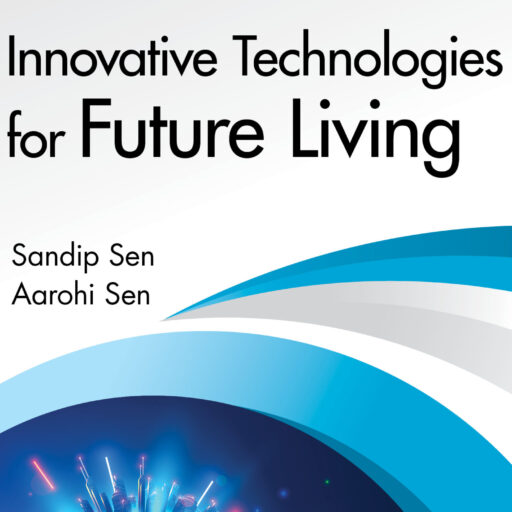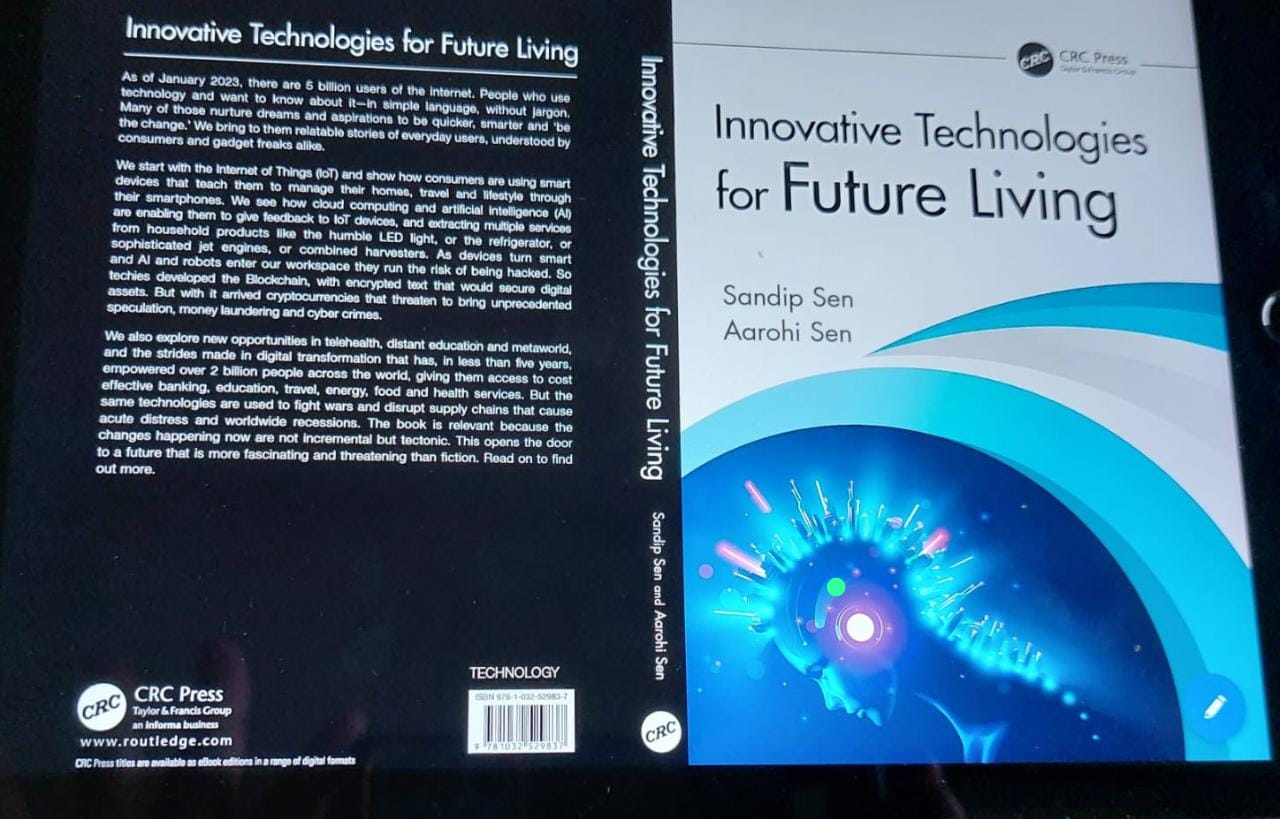Why was the book written?
As of 2023, the world had 30 million technology developers and over 5 billion technology users. Yet, over 90% of technology books are aimed toward developers and experts and very few toward the uninitiated “technology user”. This book aims to assist the future living of the 5 billion plus technology users and explore how this tech world operates and how they help our continuous development and use consumer data from us to also benefit themselves.
This book is a peek into popular science and technology with a clear relevance to everyday life. It is an easy paced nonfiction, that has many stories to tell, fun-filled and futuristic. These are the stories of how we are creating and adopting different technologies, for future living, told in a conversational tone and a easy language for the curious reader who has no background of the technology world. We also dig into the past and find that a few of these technologies have been evolving had a different avatar 500 or 5,000 years ago.
The book has been written by a journalist and a thought leader. Two authors who like many others were surprised, having to grapple with multiple technologies simultaneously taking off since the 1990s. So, with nearly five decades of work and writing experience in the industry behind us, we decided to research, and chronicle, 10 frequently used technologies that will have great relevance in the near future. We explored not only the business of technology but how dozens of innovations that straddle the laboratories of top universities are working to create circular and efficient economies. We hope to capture the current interest of this generation in digital transformation, and the business of sustainability and help them to explore new challenges and find solutions to help our planet.
The timing is crucial, because the worldwide changes that are happening now are herculean and will affect how the future unfolds. Tensions between major powers are fueling multiple wars and disrupting supply chains.
The authors bring original insights from scientists and entrepreneurs, thought leaders, business people, academics and social scientists. One may or may not agree with them, for few opinions are both debatable and controversial and few simplistic while few take a contrarian view. However they provide an understanding of how to survive and negotiate difficulties at a time when trade wars economic economic wars and biological wars, cross border terrorism, armed invasions and cyber wars pose fresh challenges to humankind.
The book is important, because it is not limited to what science and technology have to offer. It is also a story about real – time politics that dictates our lives, choices, and guides what we adopt and what we leave behind. It also asks us many questions. For example, why, despite their apparent success, the internet of things and artificial intelligence worry Brad Smith enough to claim that Orwell’s 1984 could happen in 2024. Or why Chuck Collins decides to write about the professional class of enablers who are paid millions to hide trillions. While we are making great strides in innovation in many fields, science and technology is not helping all equally. In some cases, it is hurting both equity and sustainable development. The younger generation who are avid users of science and technology may like to explore these issues and make necessary sustainable and equitable changes during their lifetime.
The Technologies
It took thousands of years for humans to unravel the mysteries of science. Computers arrived 70 years ago, followed soon after by the internet. This dual capability has facilitated the dissemination of information at a high speed and low cost. It has revolutionized automation and rapidly improved education, healthcare, transportation, construction, manufacturing, agriculture and many other disciplines. The speed of development has been startling and the disruptive innovations relentless. This has been at a time when the internet connected only with humans and largely on a one-to-one basis.
The future will be more intense. It will see further disruptions. The internet will not only connect with humans but with “things”. These “things” will act not only as instructed by human intelligence but by artificial intelligence AI . They will connect not on a one-to one basis, but with their makers, multiple collaborators and users simultaneously. As “things” become smart they are turning products into lifelong services. They are digitally connected with their makers, who in turn use a constant stream of information from their users to make the product think, act and communicate. It could be anything from your car to an ingestible pill that tracks and monitors tumors in your digestive system or your brain.
However the internet of things IoT would have to draw its inputs from big data in the cloud that could be only processed by AI . We explore the concepts of machine learning and artificial intelligence and robotics and how such intelligence has been developed and machines have been trained to think like humans. We also investigate the threat to humankind from AI and robots running rogue and the need to secure their software with some kind of digital lock to prevent hacking and destruction. This brings us to the technology of digital encryption and blockchain and then inevitably to crypto currencies, volatility and cybercrimes that have grown exponentially with the advent of the decentralized currency.
The Applications
We explore several new applications like telehealth, that has made massive progress during the pandemic, helping treatment and recovery of millions of patients worldwide. When cities locked down and travel became impossible telehealth took over the consultation and treatment process aided by digital tracking and health devices. Another application that showed huge transformation and meteoric growth was distant education. As schools and colleges shut down during the pandemic tele education or edutech took over seamlessly improving both qualitative as well as quantitative improvement of services. Besides virtual reality and the advances made in digital transformation that has brought technology to every doorstep across the world. This enormous leap taken by humankind in the last few years has also posed several challenges.
The Threats
In the third section of this book, we focus on those challenges in an intensely competitive and fractured world of today, where war torn nations are adversaries, no longer thinking of globalization but of localization. We find that the tussle for technology leadership has intensified as only two island nations Taiwan and South Korea manufactures the most advanced 5 nano meter chips barely a few hundred miles from mainland China that powers every AI development worldwide. Will another war break out as China is being denied access to those highly advanced chips. We examine how the digital world is being torn apart and may be forced to build separate supply chains and how resource shortages shall would force new recycling operations, ultimately push-starting a circular economy and a long overdue new beginning.
Documenting a rapidly spinning story of the technology world is challenging, and many theories and developments recounted in the book need to be taken forward. We hope you enjoy this beginning and we promise to churn out more engrossing stories of living in the future in the coming days.

Click on the link below to purchase the book
